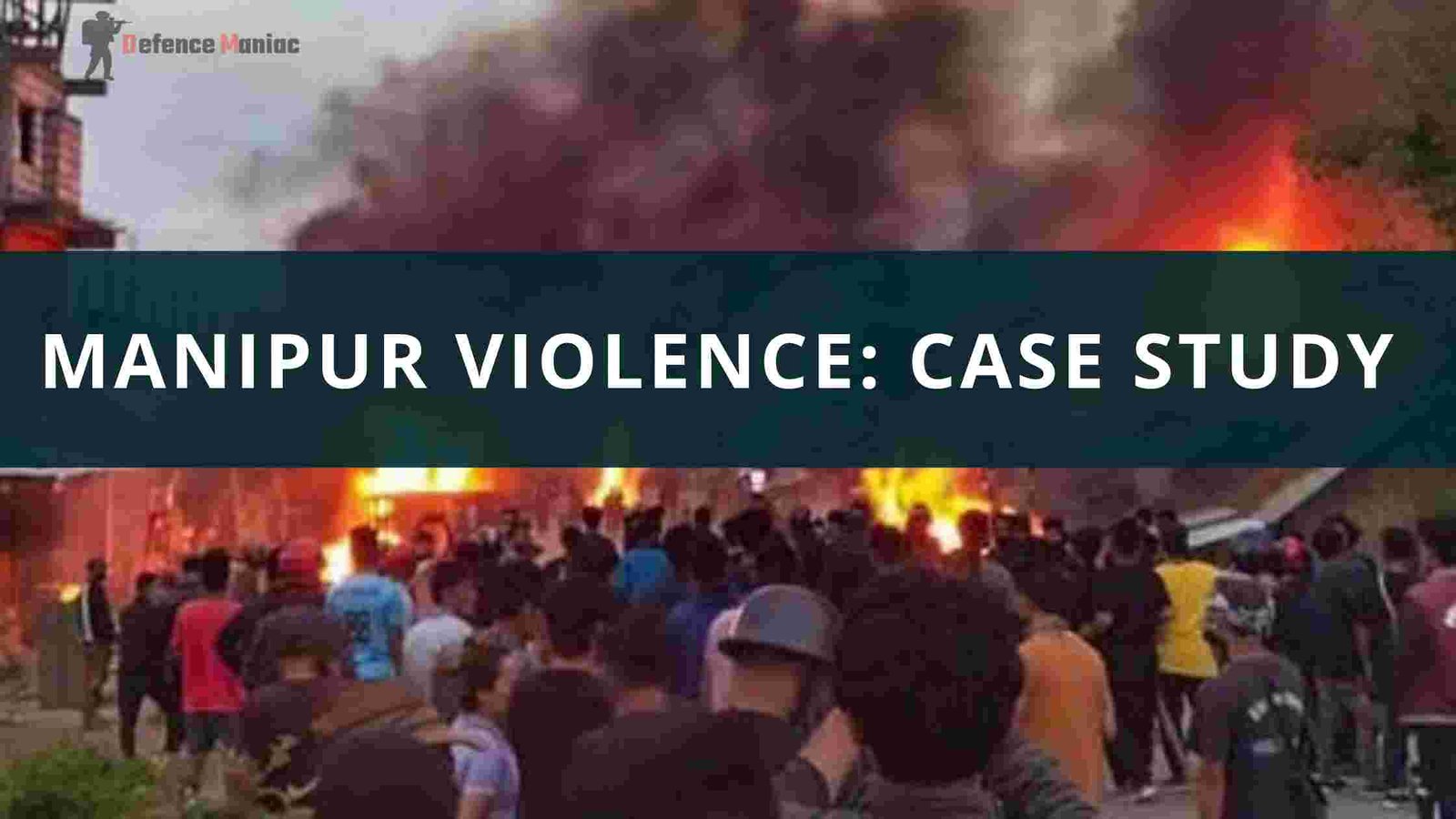Many things happened in Manipur in recent months and still, a lot of conflict and violence is happening. The state is burning and the people are suffering. There are reports of killings and mob lynching, the situation is so serious that the government had to activate Article 355 and issued a Shoot-at-sight order to control Manipur Violence and ensure safety.
In this article, we will cover some most important aspects related to Manipur Violence like the reasons for Manipur Violence, the History of Manipur, the demand of communities and the recent incidences related to the violence which will help you to understand the situation more clearly.
Introduction
The state of Manipur is divided into two regions – the Hilly region and the Valley Planes. In the Hilly regions which are 90% area of the Manipur State lives the Kukie and the Naga tribes who are 30% of the total population of the state and majorly Christians.
On the other hand in the Valley region which is 10% of the Manipur state lives the Meitie People who are 70% of the total population of the state. The Meitie community include Vaishnavites and Muslims all together they are also called Pangals. In the map, the grey area is the hilly region and the blacks represent the valley region.

On 3rd May 2023, a clash broke out between the Meitie and Kukie people which resulted in a severe violence, 142 people were killed and more than 300 were wounded also several people were displaced till 4th May 2023. There were two immediate regions which provoked the Manipur Violence resulting in deaths. Let’s discuss them one by one.
Reasons for Manipur Violence
1) Evictions of Tribals:
The first immediate reason for the Manipur Violence was the eviction of hill tribes from their homes. The Government of Manipur which was led by Chief Minister N. Biren Singh from the BJP decided to protect the forest area of Manipur so he ordered to evacuate some of the villagers from their homes who reside in that region.
The villagers were from K. Songjon village which falls under the Churachandpur district and they claimed that they were evacuated without any warning. They said that the government’s decision is against their entire tribe and that’s why they started a peaceful protest against the government’s decision in March.
The Government rejected their claims saying that they had conducted a land survey of the forest region and the village was also included in that. Further, the government accused the villages for using the land for illegal Drug business.
After this, the tribal leaders of hilly areas announced an 8-hour shutdown in the Churachandpur district. On the other hand, the chief minister of Manipur was going to inaugurate a gym, and the protesters broke into the gym and threw the chairs in the venue, then the protesters tried to enter the VIP section of the rally and this is where the protesters and police clashed. After this, the government imposed a curfew in the entire state and shut down mobile services for 5 days.

2) The ST Status Issue:
The eviction of hill tribes is not the only issue for the Manipur Violence there is another chapter going on the other side. The High Court had passed an order to give the Meitei people the Scheduled Tribe status and the hill tribes, the Kuki and the Naga tribes do not want them to have that status.
The Meitei community have been demanding the ST status since 2013, they believe that they need this status to protect their land and culture from the illegal immigrants from Bangladesh and Myanmar, and they believe that Naga and Kuki tribes won’t be harmed due to this.
On the contrary, the hill tribes that the Meitei people are already well educated and well connected and they should not be given the Scheduled Cast status. If the government gives them this status then the administrative power will be diminished to the valley region only as they are already in the majority in the legislative assembly and also they are already given the OBC status.
These were the immediate reasons for the immediate reasons for the outbreak of violence in Manipur. Let’s now look at the complaints of the communities with each other as well as with the government.
Complaints and Demands of Meitei People
A Meitei leader claimed that their population has fallen from 60% to 44% in the last 60 years and they feel like outsiders in their own ancestors’ land. One more thing the Meitei people complain about is the land laws of the state, the hilly tribes can buy land anywhere in Manipur while the Meitei people can only buy land inside the valley region only.
The people in the valley region demand an Inner-line permit system in their state just like other states like Mizoram and Nagaland to deal with illegal migration. If this system gets implemented then people from outside Manipur will have to take permission to enter Manipur.
But the hill tribes do not want this system as they feel that ultimately they will also be treated outsides by the government and will have to take permission to enter their own state. Both communities do not trust each other at any point which is also a major cause of Manipur Violence.
Complaints and Demands of Hill Tribes
The Naga and Kuki tribes feel that they are being discriminated in their own state. The legislative assembly have domination of the Meitei people, out of 60 constituencies in Manipur 40 are in Meitei Dominated valley areas. The Chief Minister of the state is also from the Meitei community.
The hill tribes believe that the policies of the government are against them just like in the recent example of the evacuation of hilly tribe’s homes. The leaders of the Kuki community are called Kuki refugees.
Also, the Meiteilon language which is spoken by the Meitei community is made mandatory in schools till class 10th and the Manipuri hill tribes were not happy with this. Due to all this, the hilly tribes feel discrimination in their own state.
The Impact of Manipur Violence and the Current Situation of Manipur

The differences between the communities and the policies and decisions of the government resulted in violent protests all over Manipur with several killings and mob lynching. The protestors blocked two national highways NH2 and NH37 which connect Manipur to the other parts of India.
On July 19 a video surfed on the internet where two women are paraded naked by the mob, they were sexually assaulted by the mob due to communal conflicts. However, five of the accused are arrested. The video further outraged the conflict between the communities. The Hon. Supreme Court of India ordered the state government to act as soon as possible and stop the violence Manipur is facing.
The Indian Army, Assam Rifles and Manipur police are working on to control the situation and stop the Manipur violence.





